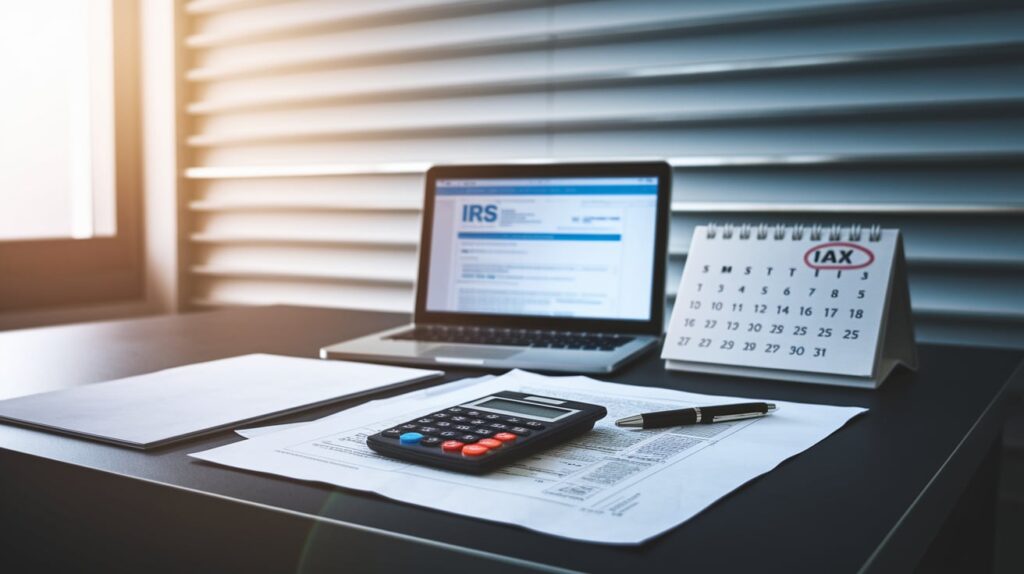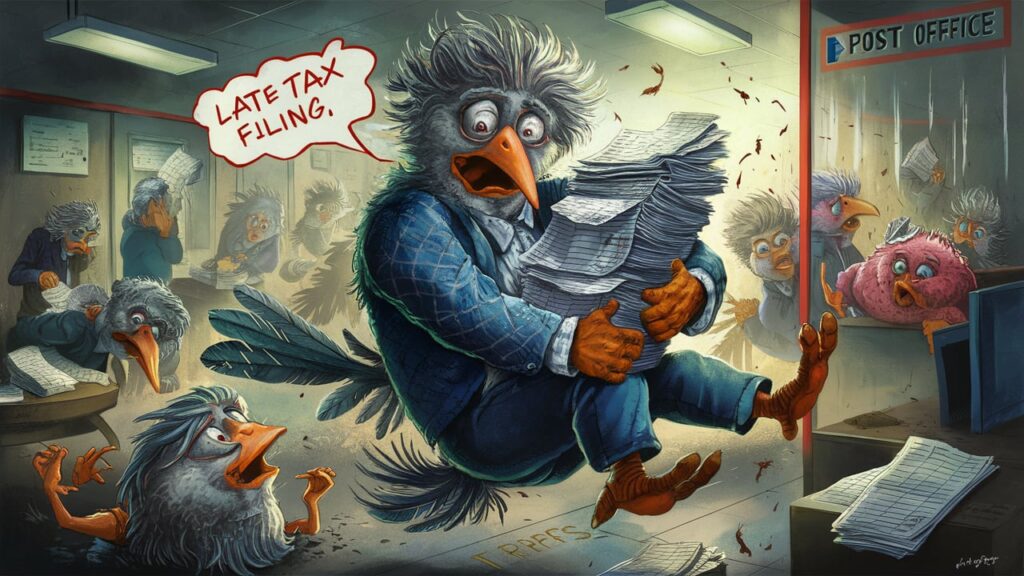Filing back taxes can seem daunting, but it’s essential for financial peace. Understanding the process is key to compliance and avoiding penalties.
Many people find themselves in a situation where they need to file back taxes. It might be due to missed deadlines, unexpected life events, or simply overlooking the filing process. Whatever the reason, addressing back taxes is crucial to staying on good terms with the IRS.
Ignoring this responsibility can lead to penalties, additional interest, and even legal trouble. Fortunately, with the right guidance, filing back taxes doesn’t have to be overwhelming. This step-by-step guide aims to simplify the process, helping you understand what needs to be done and how to approach each step with confidence. Let’s explore how you can file back taxes efficiently and regain control over your financial future.
Filing Back Taxes Basics
Understand how to file back taxes with this simple guide. Discover the steps needed for tax compliance. Learn how to gather your documents, complete forms, and submit them correctly. Stay informed and avoid penalties by addressing past tax obligations.
Filing back taxes might seem daunting, but understanding the basics can significantly ease the process. Whether you’ve forgotten to file in previous years or discovered you made an error, there are specific steps to regain compliance. Knowing the essentials can help you tackle your tax situation with confidence and clarity.
Reasons For Filing
There are many reasons to file back taxes. Often, you might find that you’re owed a refund for a previous year. Filing can also prevent legal complications, ensuring you stay on the right side of the IRS. Imagine the peace of mind knowing your tax records are up-to-date and accurate.
What drives you to get your taxes in order? Is it the possibility of a refund or just the sheer relief of ticking it off your to-do list? Understanding your motivation can fuel you through the process.
Consequences Of Not Filing
Avoiding tax filing can lead to unwanted consequences. You might face penalties that increase over time. Interest accumulates on unpaid taxes, making your financial burden heavier.
Imagine receiving a notice from the IRS—a reality for many who overlook their taxes. These notices can lead to stress and anxiety, affecting your daily life. Why risk that when you can act now?
Tax issues can also affect your credit score, making it harder to secure loans. Your financial future deserves better. Filing back taxes can pave the way to a healthier financial outlook.
Gathering Necessary Documents
Start by collecting W-2s, 1099s, and past tax returns. Organizing financial records helps in accurately filing back taxes. Ensure all documents are complete and legible for smooth processing.
Filing back taxes might feel overwhelming, but with the right documents in hand, you can simplify the process and ensure compliance. Gathering necessary documents is your first step to a smooth filing experience. It’s like setting up a sturdy foundation for a house; without it, everything else crumbles. Are you ready to dive in and get organized?
Income Records
Your income records are vital for accurately reporting your earnings. Think of them as the backbone of your tax filing. You’ll need your W-2 forms if you were employed. For self-employed individuals, 1099 forms come into play.
Don’t forget about other income sources like dividends or rental income. Collect statements from banks or investment firms. These documents provide a clear picture of your financial activity.
Deduction Evidence
Deductions can lower your taxable income, saving you money. But how do you prove your eligible expenses? Gather receipts and invoices for deductible expenses like medical bills or charitable donations.
Organize these documents by category to avoid confusion. For instance, keep all healthcare-related receipts together. This makes it easier to find what you need when you’re knee-deep in filing.
Remember, without proper evidence, deductions won’t stand. So, ensure your paperwork is thorough and accurate.
Engaging in this process reveals the hidden details of your financial life. Isn’t it fascinating how much you learn about your spending habits? By gathering your documents, you’re not just preparing your taxes; you’re understanding your financial story better. How will this newfound clarity impact your future financial decisions?
If you’re missing documents, request transcripts from the IRS using Form 4506-T.
Choosing The Right Tax Forms
Choosing the right tax forms is a crucial step when filing back taxes. It might seem daunting, but it doesn’t have to be. Picking the correct forms ensures you’re providing accurate information to the IRS, which is essential for compliance and preventing future headaches. So, how do you know which forms to pick?
Form Types Explained
Understanding the different types of tax forms is your first step toward compliance. The most common form for individual taxpayers is the 1040, used for reporting your annual income. If you’re self-employed, you might need the Schedule C to report your business income and expenses. There are also forms for specific situations, like 1099s for reporting income from non-employment sources or W-2s for your wage and salary information.
Consider your specific financial situation. Did you earn rental income last year? You may need to use Schedule E. Did you pay interest on student loans? Form 1098-E is likely required. By matching forms to your circumstances, you can ensure accurate and complete reporting.
Where To Find Forms
Finding the right tax forms is easier than you might think. The IRS website is a treasure trove of resources, offering downloadable PDFs of nearly every form you might need. They also provide instructions and publications to help you understand each form’s purpose and how to fill it out. Your local library might also have paper copies of common forms if you prefer a physical version.
Consider using tax software or consulting a professional for guidance. These tools often automate form selection based on your input, minimizing errors and saving time. Have you ever wondered if a simple mistake could cost you? With the correct forms in hand, you reduce the risk of penalties and interest.
Making informed choices about tax forms is not just about compliance—it’s about peace of mind. Empower yourself with the knowledge to make the right decisions, and you’ll find filing back taxes becomes less of a chore and more of a step toward financial clarity.
Download prior-year tax forms from the IRS Archives or use tax software that supports back tax filing.
Calculating Tax Liability
Calculating tax liability is crucial for filing back taxes. It’s the amount you owe to the government based on your income. Understanding this can seem tricky, but breaking it down helps. You have two main options: using tax software or manual calculations. Both methods have their benefits. Let’s explore these options.
Using Tax Software
Tax software simplifies calculating tax liability. It guides you through the process step by step. Enter your income details, deductions, and credits. The software calculates what you owe. This method is quick and reduces errors. Many people find it user-friendly. Some software even offers tips and explanations. This makes the process more understandable.
Manual Calculations
Manual calculations require more effort but give you full control. Start by gathering your financial documents. These include income statements and receipts for deductions. Use tax tables or IRS resources to determine your liability. Calculate your total income first. Then subtract allowable deductions. This gives you your taxable income.
Next, apply the tax rate to your taxable income. This determines your tax liability. Remember to consider any tax credits you qualify for. These can reduce your tax liability. Double-check your numbers to avoid mistakes. Manual calculations take time but provide a clear understanding of your finances.
Submitting Your Returns
Filing back taxes may seem overwhelming, but submitting your returns is straightforward. You have two primary methods: electronic filing and mailing paper returns. Each method has its advantages. Choose based on your convenience and comfort.
Electronic Filing Options
Electronic filing is fast and efficient. Many taxpayers prefer it. Use IRS-approved software for accuracy. This software guides you step-by-step. It minimizes errors. You receive confirmation once filed. No waiting for the mail. It’s also secure. Your personal information stays protected. Tax professionals often recommend this method.
Mailing Paper Returns
Mailing paper returns is traditional. Some find it more comfortable. You can print forms from the IRS website. Fill them out carefully. Double-check for mistakes. Attach required documents. Use certified mail for tracking. Keep a copy of everything. It’s slower than electronic filing. Allow extra time for delivery. Ideal for those who prefer paper records.

Handling Tax Payments
Filing back taxes can seem daunting. Start by gathering your financial records. Next, complete the necessary tax forms. Finally, submit your paperwork to the tax authorities. Following these steps ensures compliance and peace of mind.
Handling back tax payments can feel overwhelming, but with the right approach, you can navigate this process smoothly. Whether you’re dealing with a hefty sum or a modest amount, understanding your payment options is crucial. Let’s delve into the practical steps you can take to handle your tax payments effectively.
Payment Plans
If your tax bill is too much to pay all at once, consider setting up a payment plan with the IRS. This can help you manage your finances without undue stress. Payment plans allow you to spread your payments over time, making it easier to stay on top of your obligations.
Applying for a payment plan is straightforward. You can do it online or over the phone. Once approved, you’ll make monthly payments until your debt is cleared. Remember, consistency is key—missing a payment can complicate your situation.
Penalties And Interest
Ignoring back taxes can lead to penalties and interest, which can quickly add up. Even small delays can result in significant financial consequences. Understanding these potential costs is essential to avoid further financial strain.
The IRS charges interest on unpaid taxes, and this is compounded daily. Additionally, failing to file or pay on time results in penalties. If you find yourself in this situation, addressing it promptly can save you from escalating fees.
Have you ever considered how much a small oversight could cost you in the long run? Being proactive about penalties and interest can prevent unnecessary financial burdens.
Handling your back tax payments doesn’t have to be a daunting task. By exploring payment plans and understanding the implications of penalties and interest, you can take control of your financial future. Remember, the sooner you act, the more options you have available.
Addressing Irs Communication
Addressing IRS communication involves understanding how to file back taxes effectively. Follow a step-by-step guide to ensure compliance with IRS rules. Timely submission and accurate documentation help avoid penalties and ensure financial peace.
Filing back taxes can be daunting, especially when the IRS reaches out. Addressing IRS communication effectively is crucial to avoid penalties and ensure compliance. If you’ve ever been startled by an IRS notice, you’re not alone. Many have navigated this path and emerged successfully, transforming uncertainty into clarity.
Responding To Notices
Receiving a notice from the IRS can be intimidating. But remember, it’s just a piece of paper indicating an issue that needs attention. Start by carefully reading the notice. It usually contains detailed information about what the IRS needs from you.
Once you understand the notice, take action promptly. Delays can worsen the situation. If the IRS requests documentation or payments, gather the necessary information. Addressing their queries directly and swiftly can prevent further complications.
Do you feel overwhelmed by the notice details? You’re not alone. Many individuals initially panic but find relief in knowing the IRS is open to communication. Call the number provided on the notice for clarification or ask questions. It’s a simple step that can provide peace of mind.
Seeking Professional Help
Sometimes, IRS notices are complex and require expertise. This is where professional help can be invaluable. Tax professionals, such as CPAs or tax attorneys, specialize in handling IRS communications. They can offer guidance tailored to your situation.
Consider your past experiences. Have you struggled with tax issues before? If so, a professional can help prevent recurring problems. They can also negotiate on your behalf, potentially reducing penalties or arranging payment plans.
If you’re unsure where to find reliable help, ask for recommendations. Friends or family members may have had positive experiences with tax professionals. This personal insight can guide you to someone trustworthy.
Ultimately, addressing IRS communication efficiently can lead to compliance without stress. Taking proactive steps and seeking professional help when needed ensures you’re not alone in your tax journey. Are you ready to turn that daunting notice into a manageable task?
Preventing Future Back Taxes
Navigating tax compliance requires attention and action. Filing back taxes promptly prevents future penalties and interest. Follow a clear step-by-step guide to ensure timely and accurate submissions.
Filing back taxes can feel like a daunting task. However, once you’ve tackled the issue, it’s crucial to prevent it from happening again. Nobody wants to face the stress of accumulating tax debt year after year. By taking proactive steps, you can stay on top of your tax responsibilities. Let’s explore some practical strategies to ensure you’re always up-to-date with your taxes.
Regular Tax Updates
Staying informed is key to avoiding future back taxes. Tax laws change frequently, and missing an update can lead to unexpected liabilities. Make it a habit to check for new tax regulations regularly. Subscribe to newsletters from reputable tax authorities or follow credible financial blogs.
Consider setting reminders in your calendar to review tax-related news. This simple act can keep you ahead of potential changes. Imagine having peace of mind knowing you’re prepared for any tax adjustments.
Using Professional Services
Hiring a professional can be a game-changer in managing your taxes. Accountants and tax advisors offer expert guidance tailored to your specific needs. They can help identify deductions you might miss and ensure accurate filing.
Think about how much time and stress you’ll save by relying on their expertise. Investing in professional services might seem like an added expense, but the long-term savings could outweigh the costs. Plus, their support can prevent errors that lead to back taxes.
Have you ever considered the relief of knowing an expert is handling your tax matters? It’s worth exploring, especially if you’ve struggled with back taxes before.
Preventing future back taxes is all about staying informed and seeking help when needed. Are you ready to take control of your tax situation?
Frequently Asked Questions
How Many Years Back Can I File A Tax Return?
You can file a tax return for up to three years after the original deadline. Filing late may result in penalties or interest. Always check with the IRS for the latest guidelines and ensure your tax documents are accurate and complete before submitting them.
What Are The Requirements For Tax Compliance?
Tax compliance requires accurate record-keeping, timely tax filings, and payment of taxes due. Understand applicable tax laws and seek professional advice if needed. Ensure all documentation is complete and up-to-date. Maintain transparency with tax authorities to avoid penalties and legal issues.
How Many Years Can You Legally Not File Taxes?
You must file taxes every year if your income meets IRS requirements. Not filing taxes can lead to penalties. Generally, the IRS can audit you within three years, but not filing taxes indefinitely is illegal and risky. Consult a tax professional for guidance on your specific situation.
How Many Years Back Can The Irs Collect Taxes?
The IRS can collect taxes up to 10 years from the date of assessment. This period is known as the statute of limitations. After 10 years, the IRS usually cannot pursue collection unless certain exceptions apply. It’s important to resolve tax debts promptly to avoid complications.
Conclusion
Filing back taxes might seem tough, but it’s manageable. Follow the steps. Gather your documents, fill out forms, and submit them. Always check for errors. This ensures accuracy. Seek help if needed. Tax professionals can guide you. Avoid future issues by staying updated on tax rules.
Regular filing prevents penalties. Remember, understanding the process is key. Compliance benefits you and your financial health. Stay organized and proactive. It’s never too late to catch up. You can achieve tax compliance with patience and attention. Keep moving forward with confidence.
Sources:
- IRS. (2024). Penalties for Late Filing & Payment. https://www.irs.gov/
- IRS. (2024). Prior Year Tax Forms. https://www.irs.gov/forms-instructions
Disclaimer: The content on this page is for general information only and should not be considered legal advice. We work hard to provide accurate and up-to-date details, but we can't guarantee the completeness or accuracy of the information. Laws and rules change often, and interpretations may vary. For specific advice, always consult a qualified legal expert. We are not liable for any actions you take based on this information. If you spot any errors or outdated content, please contact us, and we’ll update it as soon as possible.


